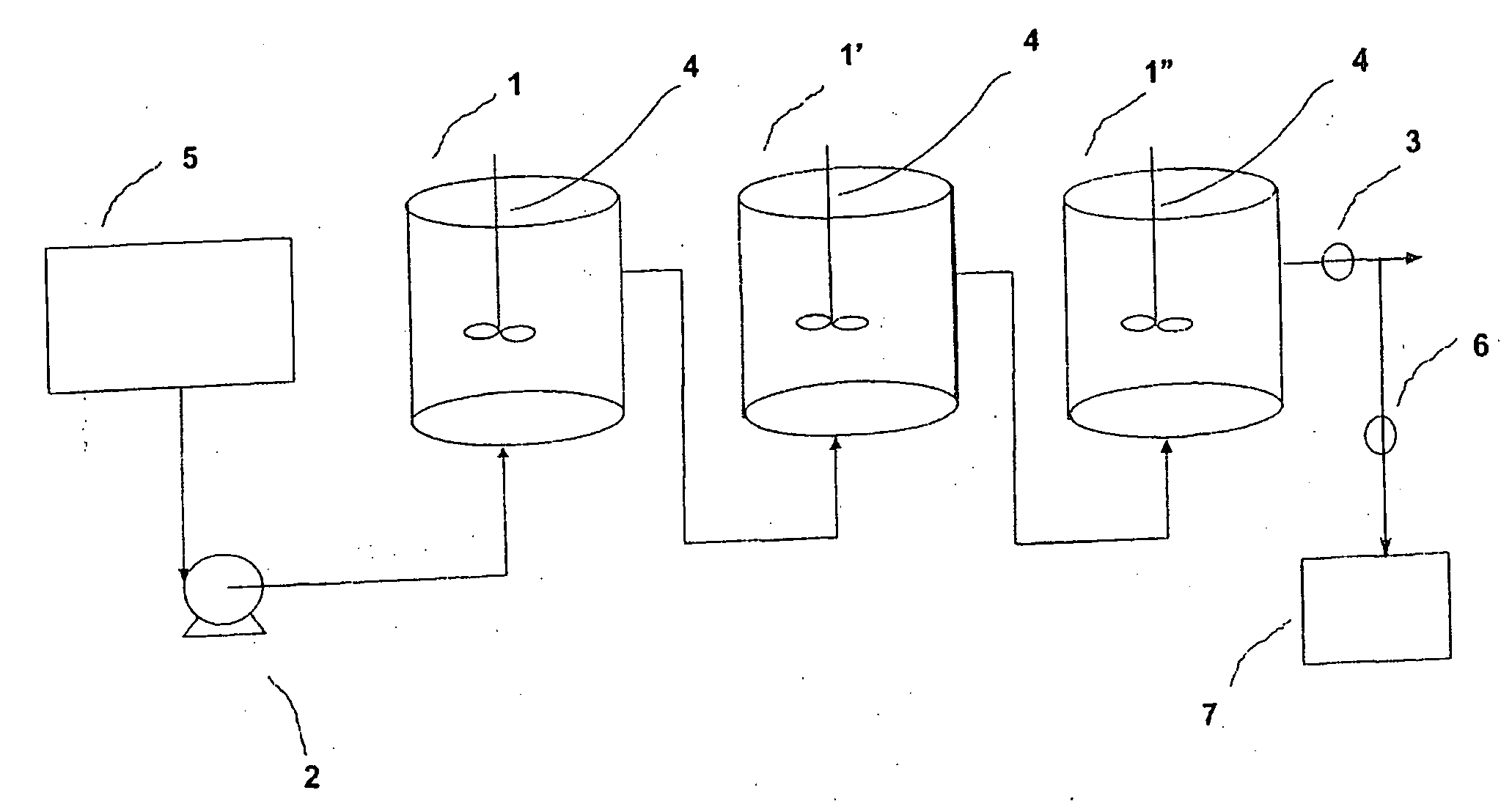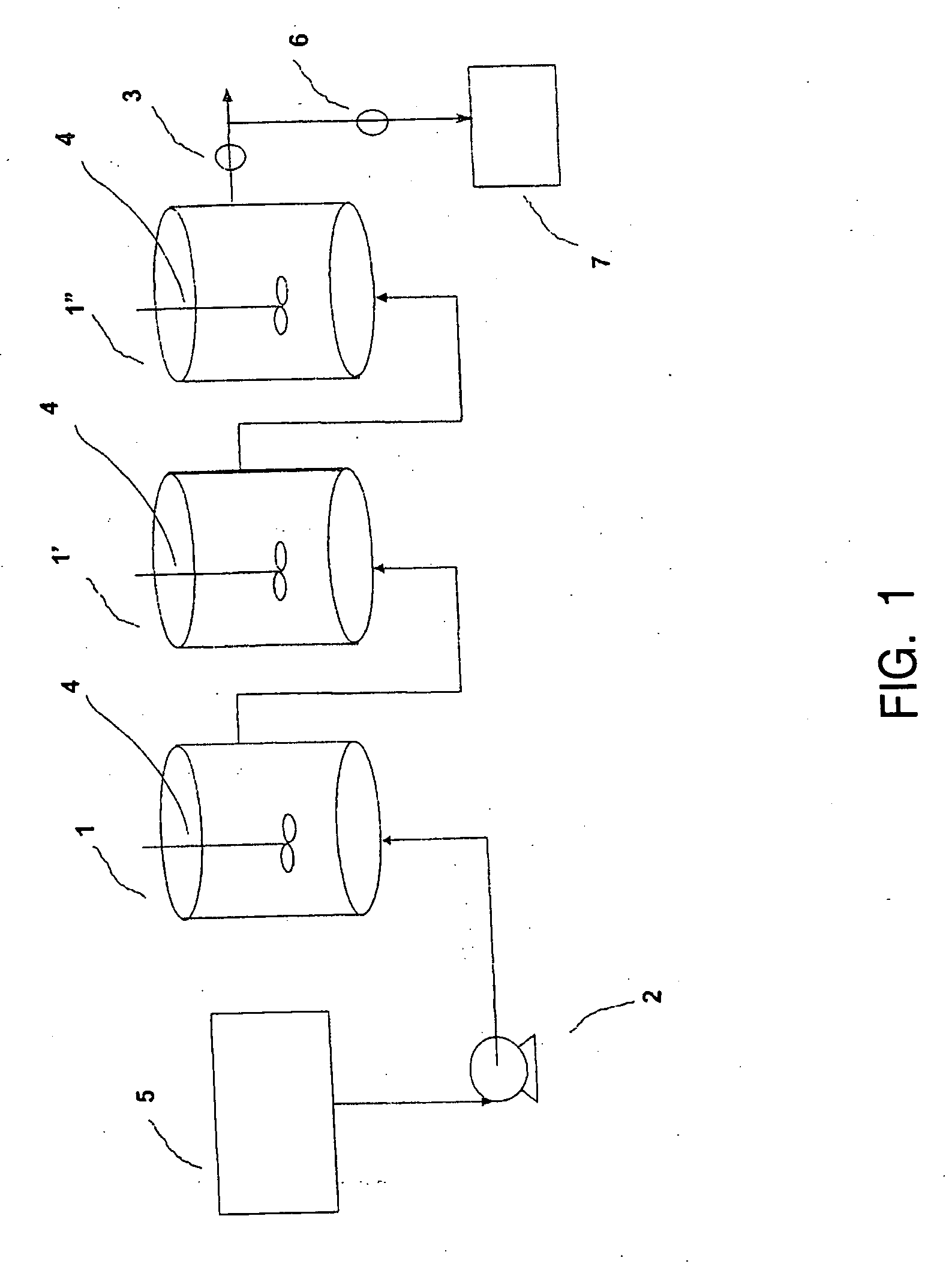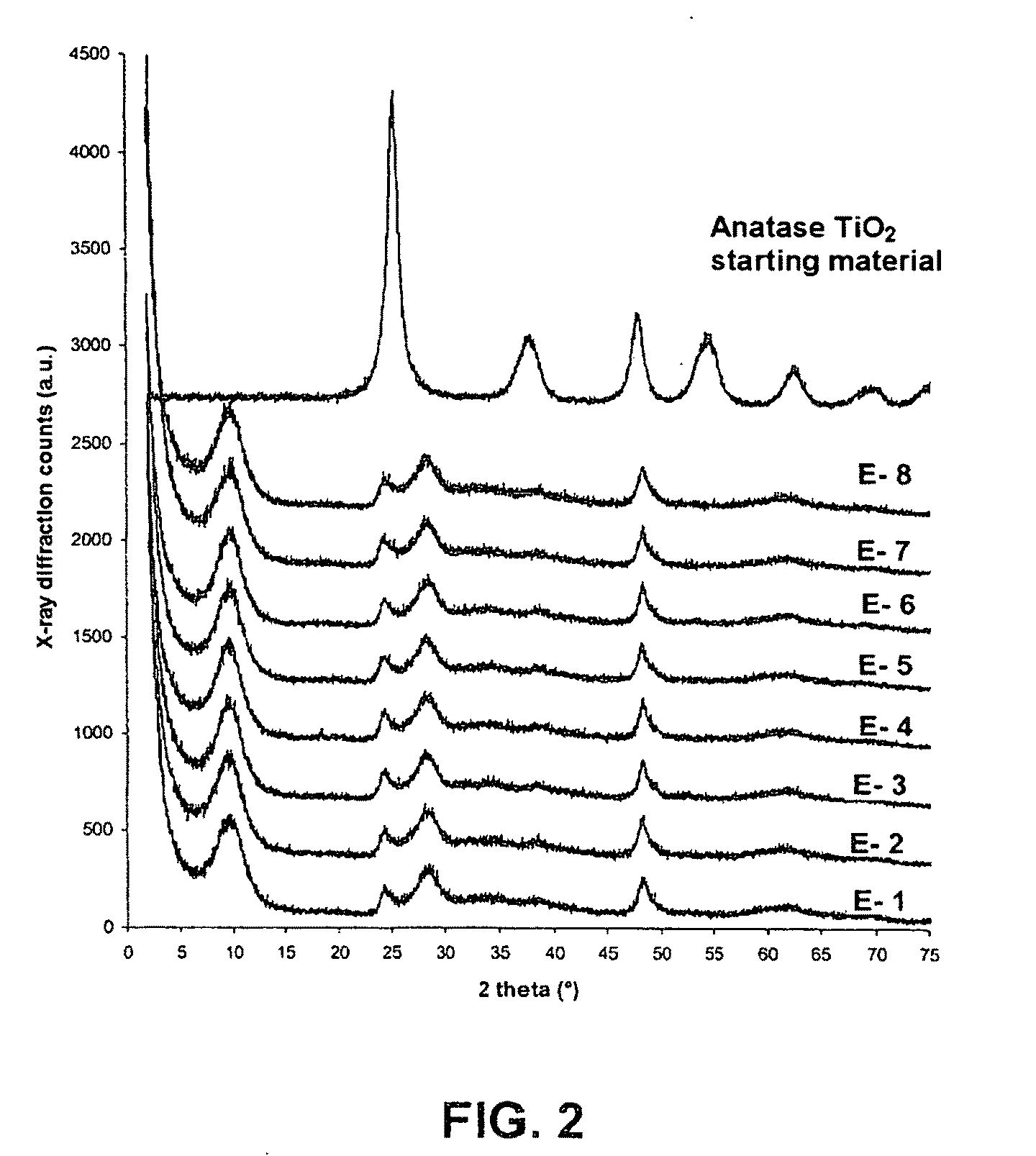Continuous process for the preparation of sodium titanate nanotubes
- Summary
- Abstract
- Description
- Claims
- Application Information
AI Technical Summary
Benefits of technology
Problems solved by technology
Method used
Image
Examples
example 1
[0046]The reactor used had a capacity of 6 litres and was suitable for continuous operation, with the feed rate of the reaction mixture being the same as the discharge rate of the product. The reactor was sealed and fitted with a helicoidal stirrer driven by a high-torque mixer with speed control, set at 400 rpm. The reactor was heated with the aid of circulating hot oil that came from a thermostatically controlled reservoir and was passed through the jacket surrounding the reactor in question. The temperature was monitored with the aid of a thermocouple located in a well inserted into the reactor. Before introducing the reaction mixture, the reactor was conditioned by the continuous injection of water into it until the temperature, pressure and feed rate had reached the required values.
[0047]611 g of TiO2 (commercial anatase in powder form, marketed as FINNTi®-S140) were added to 49.400 g of a 27. % solution of NaOH (wt / wt) in a feed tank, from which the reaction mixture was contin...
example 2
[0049]For this comparative example, the reaction was carried out with the same mixture and under the same hydrothermal conditions as those used in Example 1, but the reactor was now used according to the conventional batch process.
[0050]61 g of TiO2 (commercial anatase in powder form, marketed as FINNTi®-S140) were added to 4.940 g of a 27% solution of NaOH (wt / wt), the ratio between these reactants being exactly the same as in Example 1.
[0051]This mixture was introduced into a 6-litre reactor fitted with the same stirrer and heating arrangement as those used in Example 1. The reactor was sealed and isolated for batch operation. The stirrer was operated at a speed of 400 rpm, and the reactor was heated with circulating hot oil that was taken from a thermostatically controlled reservoir and passed through the jacket around the reactor. The reaction temperature was monitored with the aid of a thermocouple located in a well inserted into the middle of the reaction mixture. When the rea...
example 3
[0055]A set of three reactors was arranged as shown in FIG. 1. Each reactor, with a capacity of 6 litres, was sealed and fitted with a helicoidal stirrer driven by a high-torque mixer with digital speed control. Each reactor was heated independently with circulating hot oil that came from a thermostatically controlled reservoir and was passed through the jacket around each reactor. The reaction temperature was monitored with the aid of a thermocouple placed in a well, which was inserted into each reactor. Prior to the introduction of the reaction mixture, the reactors were conditioned by the continuous injection of water into them until the temperature, pressure and feed rate had reached the required values, these parameters being decisive for the reaction time.
[0056]611 g of TiO2 (commercial anatase in powder form, marketed as FINNTi®-S140) were added to 49.400 g of a 27% solution of NaOH (wt / wt) in a feed tank. The reaction mixture was continuously pumped from the latter into the ...
PUM
 Login to View More
Login to View More Abstract
Description
Claims
Application Information
 Login to View More
Login to View More - R&D
- Intellectual Property
- Life Sciences
- Materials
- Tech Scout
- Unparalleled Data Quality
- Higher Quality Content
- 60% Fewer Hallucinations
Browse by: Latest US Patents, China's latest patents, Technical Efficacy Thesaurus, Application Domain, Technology Topic, Popular Technical Reports.
© 2025 PatSnap. All rights reserved.Legal|Privacy policy|Modern Slavery Act Transparency Statement|Sitemap|About US| Contact US: help@patsnap.com



